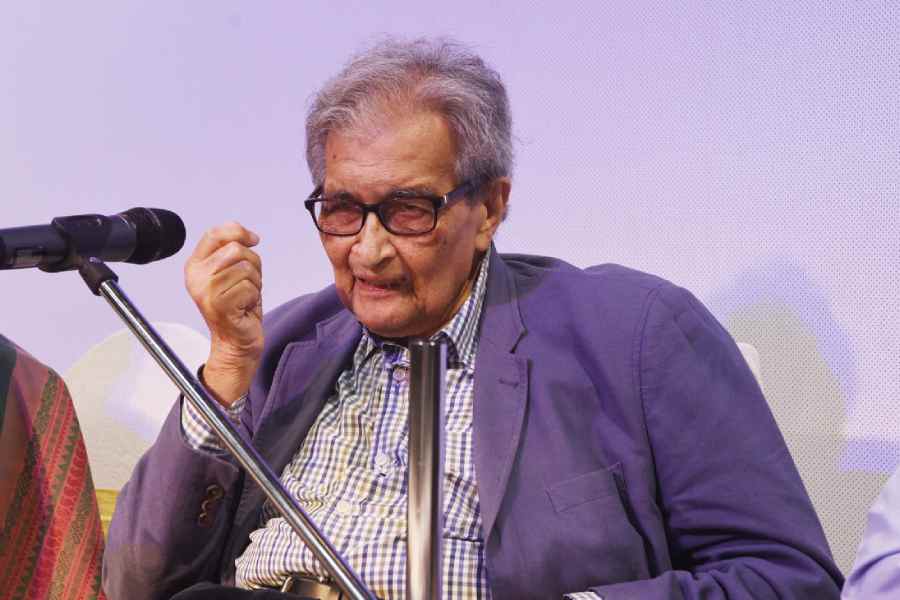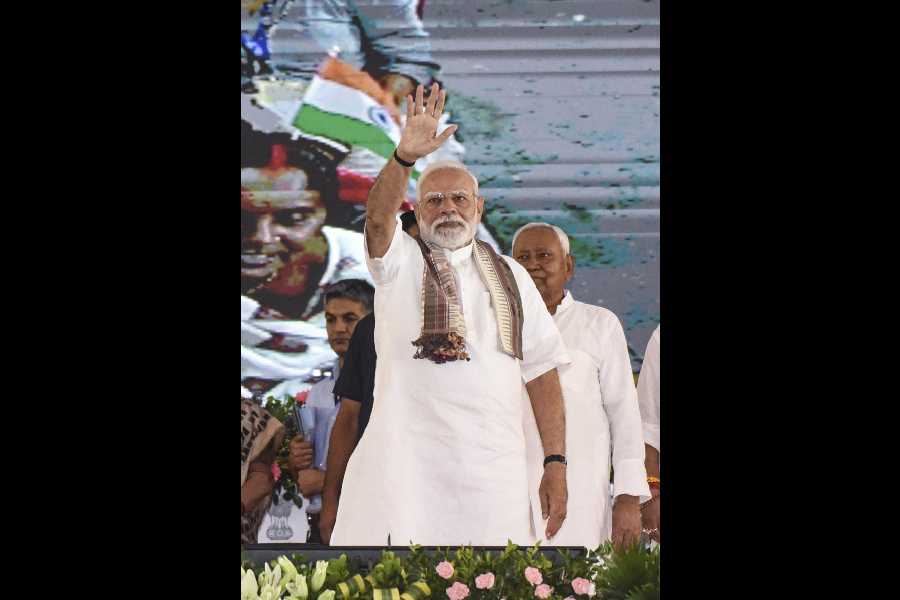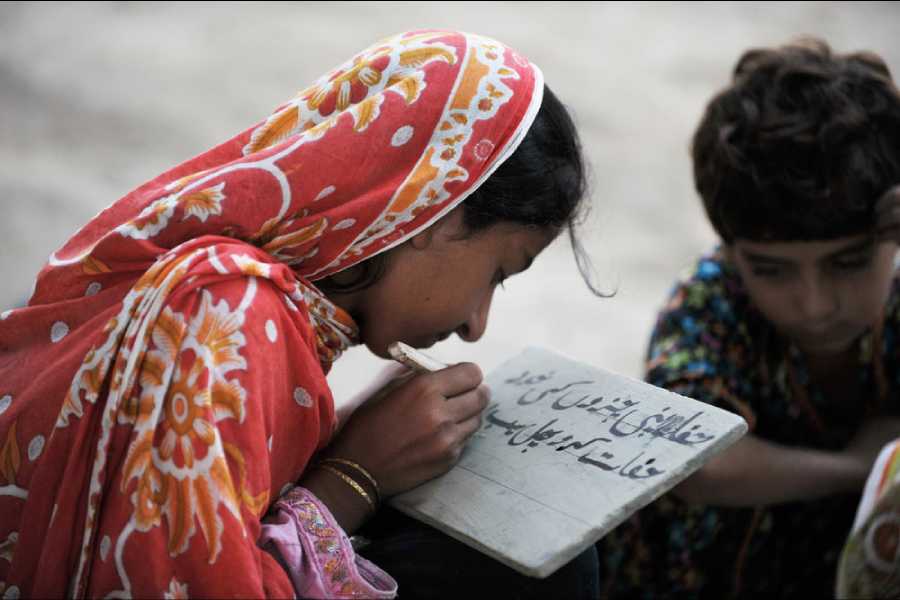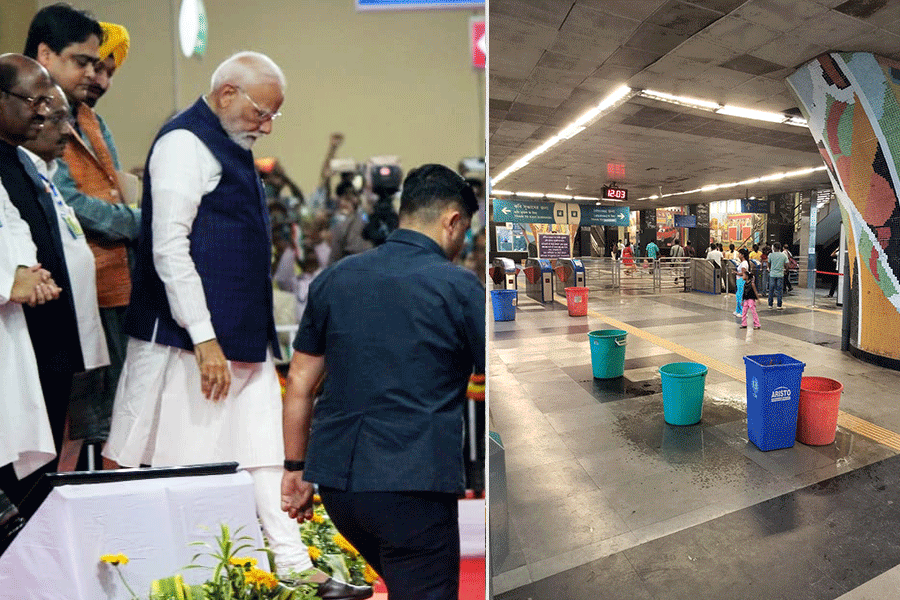
The traditional silk bandhni sari has been a staple for every Rajasthani and Gujarati bride, and the attire of choice for festivities. It is still a must for wedding functions and every Marwari/Gujarati bride’s trousseau will have at least one bandhni sari.
To make this traditional piece fashionable and increase its wearability, we thought we should do variations with the fabric, which is beautiful, season-friendly and also attractive to the young generation.

The fabric is flowy yet no compromise has been made with the look and feel of the zari, so it can be worn with ease for occasions that demand heavy dressing. This led to the amalgamation of these two craft forms — Benarasi and bandhni.
For a Benarasi bandhni sari, the weaving is done differently. The weaving is dependent on the placement of the bandhni. The areas that will not have bandhni will be filled with zari weaving. The khaka (pattern) is designed in coordination with the weaver. All this is done in Benaras. This is then sent to the karigars in Gujarat, who fill the empty spaces with the bandhni after deciding the pattern.

Most of the saris are folded in half and then the bandhni is done so that the folds of the sari become mirror images of each other. Some exclusive saris are not folded and hence each and every bandhni dot is single-handedly tied. More the variety of colours of bandhni dots, greater is the labour and time invested. The entire process of tying the bandhni can take between two to 12 months for a single sari.
Over the years we have brought in changes by playing with different fabrics and experimenting with various dyeing techniques. ‘Clamp dye with bandhni’, ‘leheriya with bandhni’ and ‘woven Bangalorean fabrics with bandhni’ are a few examples of innovations we’ve done. Fabric, motif, design and zari weaving innovations have been the key.

Currently, our collection includes a lot of Benarasi meenakari bandhni, where zari and resham threads are woven together for the embellishment, alongside the bandhni. The motifs and designs are all inspired by nature, to give it a contemporary yet traditional look. All our pieces are passed down generations and hold a strong emotional value.
Text: Smita Roy Chowdhury










